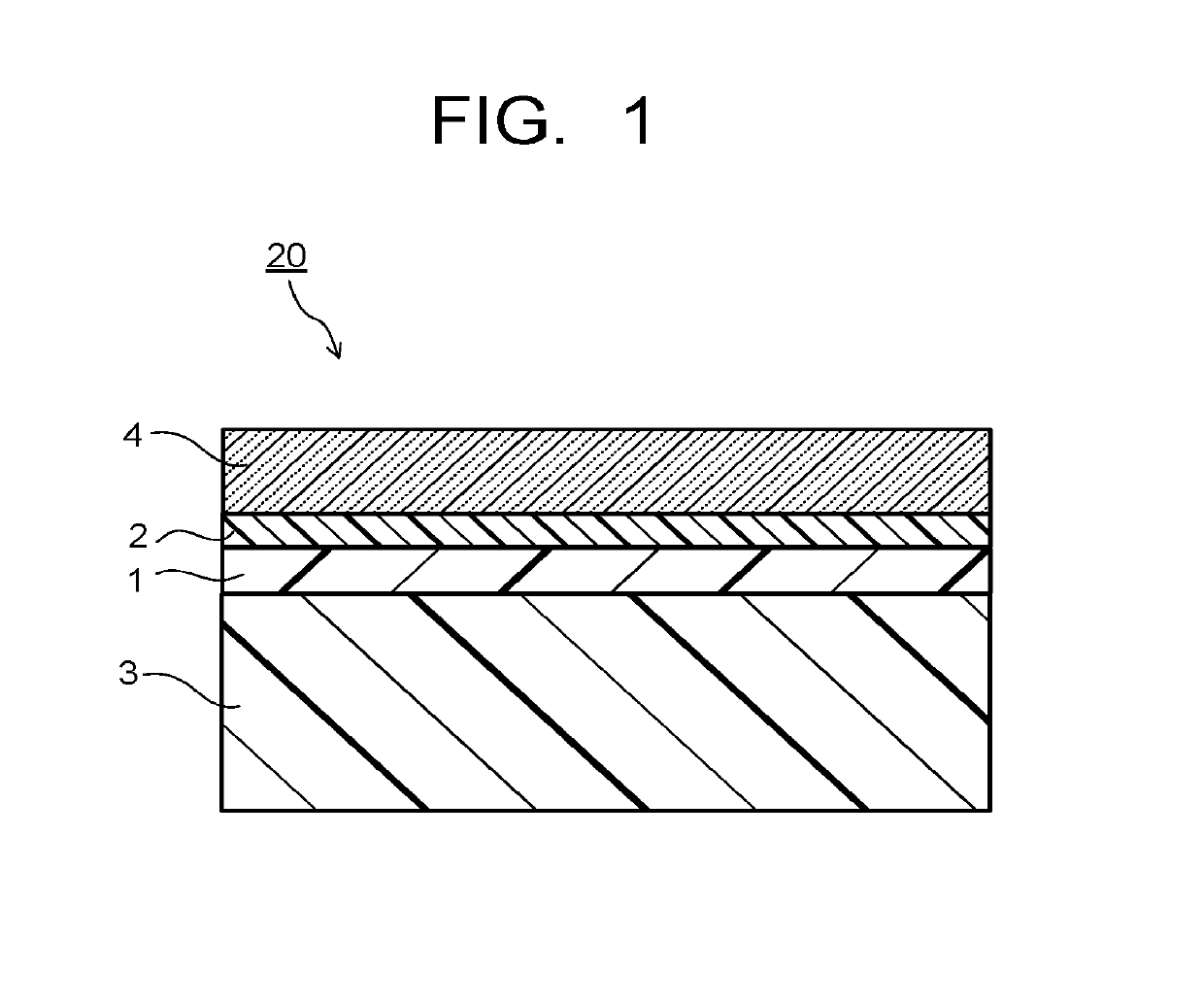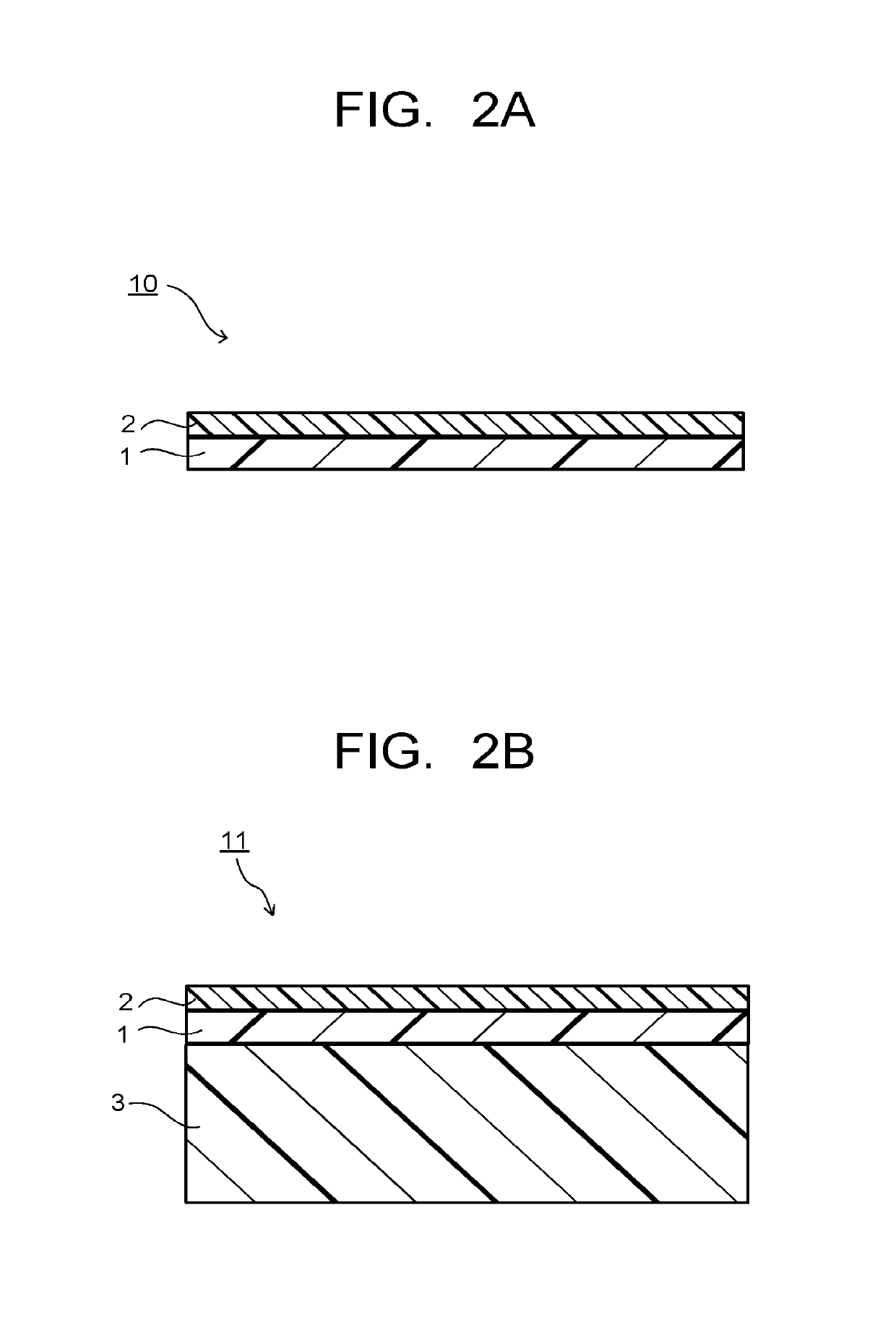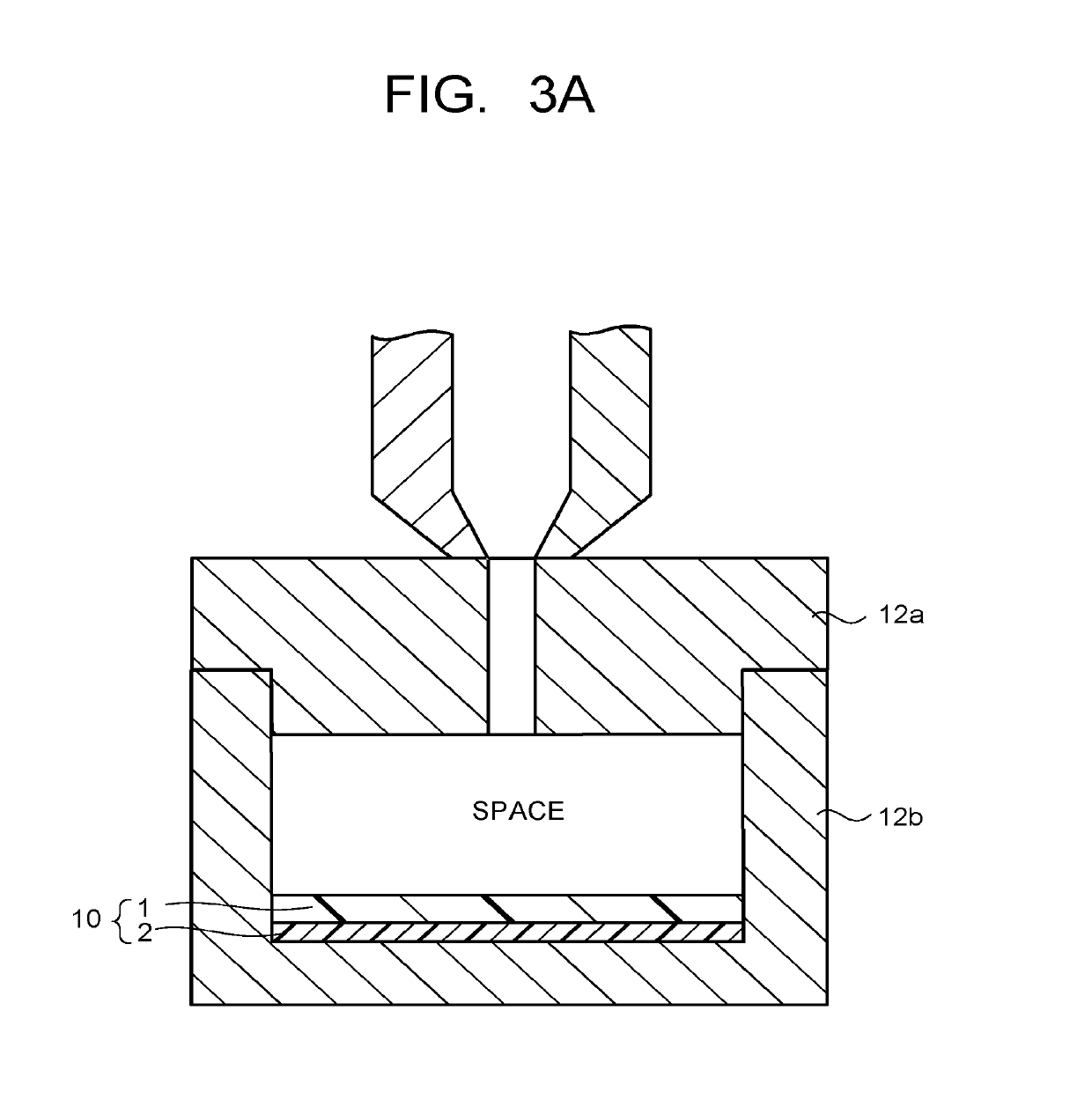Method for manufacturing resin substrate with hard coating film and resin substrate with hard coating film
a technology of resin substrate and hard coating film, which is applied in the direction of coatings, applications, household articles, etc., can solve the problems of low productivity of two-coating methods of sequentially applying the respective layers and drying them, and the abrasion resistance and weather resistance of resin plates, so as to achieve the effect of reducing adhesiveness and weather resistance, and efficient manufacturing of abrasion resistant resin substrates
- Summary
- Abstract
- Description
- Claims
- Application Information
AI Technical Summary
Benefits of technology
Problems solved by technology
Method used
Image
Examples
preparation example 1
nopolysiloxane (a) and Preparation of a Solution Containing the Organopolysiloxane (a)
[0193]In a 0.2 L flask, 10 g of 1-butanol was added to 10 g of a methyl-based silicones resin KR-500 (manufactured by Shin-Etsu Chemical Co., Ltd., a peak originating from a Si—OH group not confirmed by FT-IR and thus substantially only SiO—CH3 contained, the abundance ratio among the T units being T0:T1:T2:T3=ND:15:58:27, Mn=700, Mw=1240, Mw / Mn=1.77) and they were well stirred, and 10 g of an acetic acid and 10 g of ion-exchange water were added thereto and they were further stirred. This solution was stirred at 40° C. for 16 hours, whereby a solution containing an organopolysiloxane MSi-1 (hereinafter referred to only as “MSi-1”, concentration of MSi-1: 25 mass %) was obtained as the organopolysiloxane (a).
[0194]By comparison of the obtained MSi-1 with the KR-500 being the raw material by the FT-IR and 1H-NMR, reduction of the peak originating from a SiO—CH3 group and appearance of a peak origina...
preparation example 2
nopolysiloxane (b) and Preparation of a Solution of the Organopolysiloxane (b)
[0195]In a 1 L flask, 174 g of water dispersible silica sol having an average particle diameter of about 30 nm (pH 3.1, silica fine particle solid content; 20 mass %) and 14 g of an acetic acid were charged, and 194 g of methyltrimethoxysilane was added thereto. After stirring for 1 hour, the pH of the composition stabilized at 4.5. This composition was aged at 25° C. for 4 days, and subjected to partial hydrolysis and condensation. Thus, a solution containing a silica-containing organopolysiloxane PSi-1 (hereinafter referred to only as “PSi-1”, concentration of PSi-1: 44 mass %, silica sol in PSi-1: organopolysiloxane (b)=34.8:94 (mass ratio)) was obtained as the organopolysiloxane (b) containing silica sol.
[0196]The organopolysiloxane (b) in the obtained PSi-1 had a bonded structure mainly using T units, the abundance ratio among the T units obtained from the chemical shift by 29Si-NMR was such that T0:T...
preparation example 3
rd Coating Layer Forming Composition (HC-1)
[0198]In the solution containing MSi-1 obtained in the above-described preparation example 1, the solution containing PSi-1 obtained in the above-described preparation example 2 was compounded at MSi-1:PSi-1=20:80 (mass ratio) and they were well mixed, whereby the hard coating layer forming composition (HC-1) was obtained. Here, the ratio of the organopolysiloxane (b) to 100 mass % of the organopolysiloxane (a) in the hard coating layer forming composition (HC-1) was 300 mass %.
PUM
| Property | Measurement | Unit |
|---|---|---|
| thickness | aaaaa | aaaaa |
| thickness | aaaaa | aaaaa |
| thickness | aaaaa | aaaaa |
Abstract
Description
Claims
Application Information
 Login to View More
Login to View More - R&D
- Intellectual Property
- Life Sciences
- Materials
- Tech Scout
- Unparalleled Data Quality
- Higher Quality Content
- 60% Fewer Hallucinations
Browse by: Latest US Patents, China's latest patents, Technical Efficacy Thesaurus, Application Domain, Technology Topic, Popular Technical Reports.
© 2025 PatSnap. All rights reserved.Legal|Privacy policy|Modern Slavery Act Transparency Statement|Sitemap|About US| Contact US: help@patsnap.com



